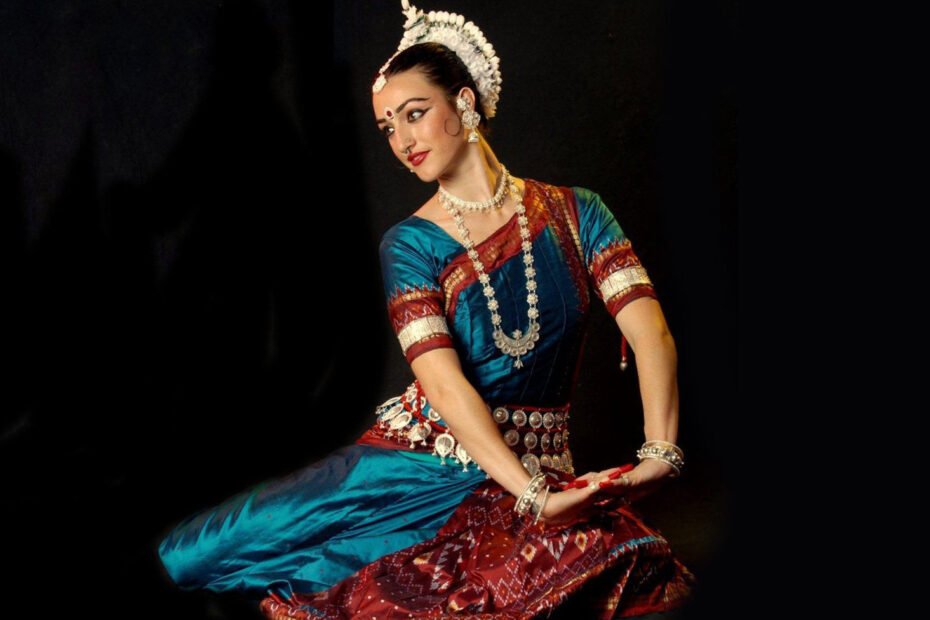Odissi, or Orissi as referred to in ancient literature, is one of the six major forms of Indian classical dance forms.
Characterized by percussive footwork and accentuated facial expressions, the extensive dance vocabulary has abstract and dramatic components. Movements, gestures, and expressions are used to interpret the music and convey stories related to Hindu Texts and tales, especially those of Jagannatha.
The History
The dance form can be dated as far back as 2nd century B.C., from murals of Udaigiri and Khandagiri. The numerous temples paid homage to the form, including the imposing Nritya Mandap or Hall of Dance in the Sun Temple.
Originally practiced by the Maharis, during the British rule in India Odissi had been suppressed and had been virtually exterminated. Though it remains a predominantly feminine dance form, it was kept alive in a few outlying villages.

The gotipuas, or young male dancers, carried the flame of Odissi and kept it alive.
As the dance form began to spread in the 1950s owing to more theatrical presentations and the combining of western influences. It is often asserted that Odissi is the oldest form of classical dance. Dancers refer to the Natya Shastra to support their claim, which is the text from which all classical dance forms are said to originate.
A highly stylized and extremely graceful dance form, the tenets laid down by the Natya Shastra are closely followed. Every movement is used to indicate one of nine rasas. The rasas are unique aesthetics created by bhava, the state of mind.
The Mechanics Of Dance

The three basic stances are:
- Samabhanga or “square pose” – A wide masculine stance with the arms raised and elbows bent.
- Abhanga – The body weight shifts from side to side, owing to knees being turned outwards and hips extending to one side.
- Tribhanga – A very feminine stance where the body is deflected at three places- the neck, torso and the knees.
Movement of the torso is unique. Keeping the legs static, the torso moves from one side to the other in a swiveling motion. The shoulders and waist remain steady without any relative motion. This requires great practice and a meticulous eye for detail to execute to perfection.
There are a total of 26-foot positions in Odissi, either flat, toe or heel contact.

The combination of the foot positions lends to the ritualistic tale and furthers the dance. The leg movements are either circular or spiral, as called upon.
Lastly, the refined lyrical movement is further accentuated by jumps, twirls, and pirouettes. These are called bhangis which end in a stance.
The Mudras
The mudras play a crucial role in any classical dance form.
The hand signs can be used as both a decorative instrument as well as a communicative form. The mudras when used in nritya act as the storyteller on behalf of the dancer.

There are 4 broad divisions of the mudras.
- Asamyukta Hasta Mudra (Single Hand Mudras)
- Samyukta Hasta Mudra (Joint Hand Mudras)
- Nrutya Hasta Mudra (Pure Dance Mudras)
- Parampara Hasta
The Rasa of Dance
The repertoire mentioned is expressed in succession following a certain order. This systematic presentation is what comprises the rasa.
The rasa consists of four broad divisions, which may be used and re-used as seen fit.
The opening of the Mangalacharan where flowers are offered to Mother Earth followed by an invocation to a deity of choice. Though the god invoked is usually Ganesha, it may be any god or goddess of choice of the dancer.

It is followed by Batu, which is performed in the praise of Shiva, where the basics of nritya are presented. Duality of masculinity and femininity by the basic stances of Samabhaga and Tribhanga. The movements become more flourishing and complex, increasing in tempo as the dance goes.
The abhinaya or acting is the communication of the story of mythology. The lyricism comes into play the most in this section of the rasa. Recitation of pakhwaj syllables takes the tempo to greater heights which are followed by the conclusion, or moksha.
All images belong to their respective owners.

